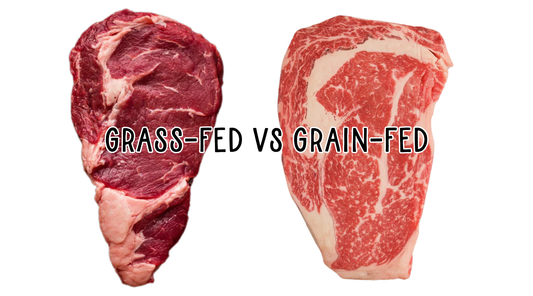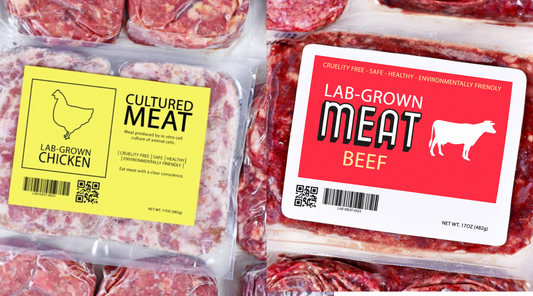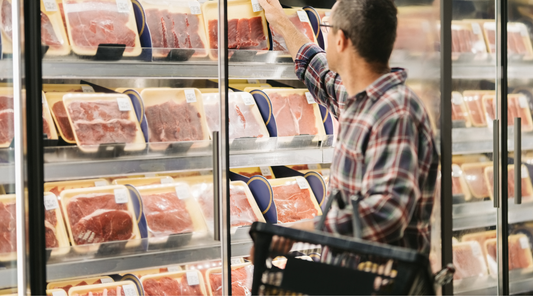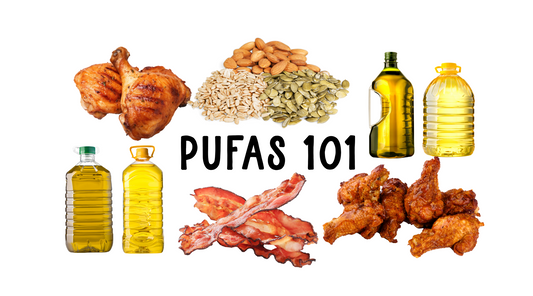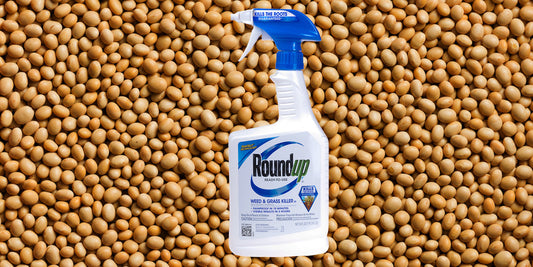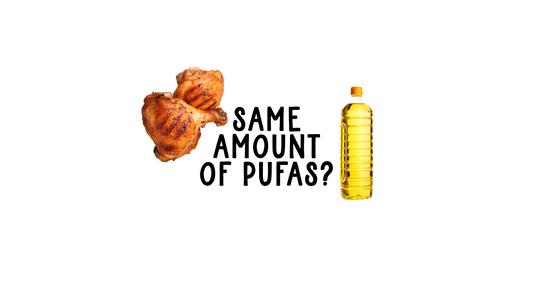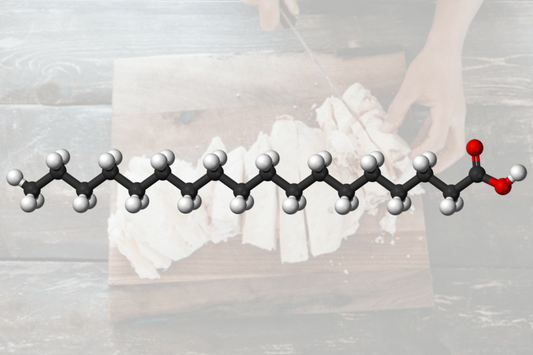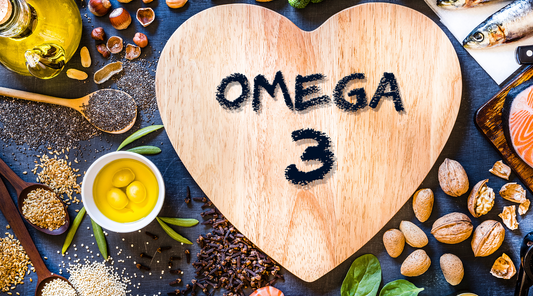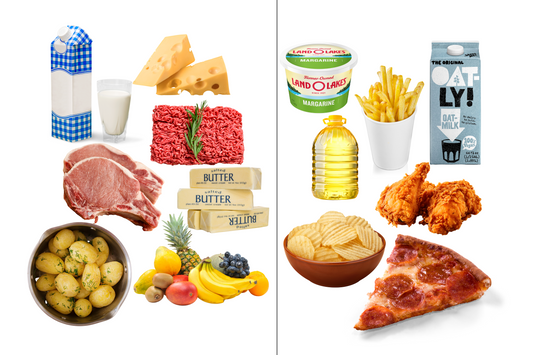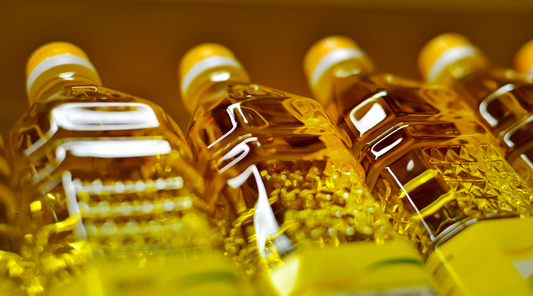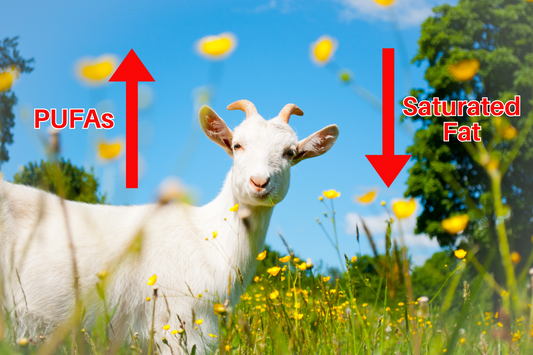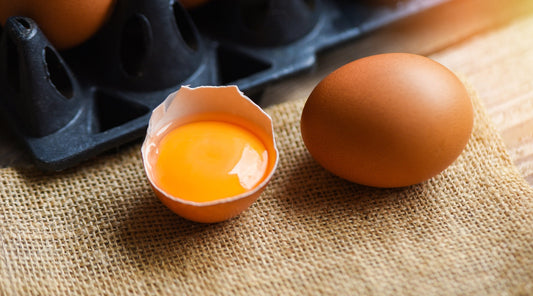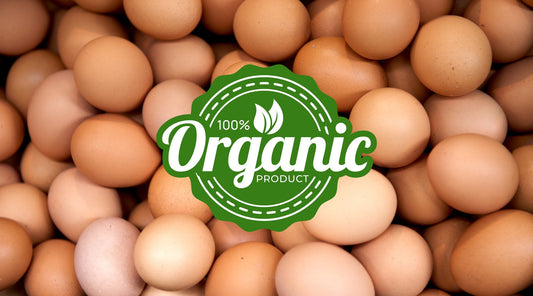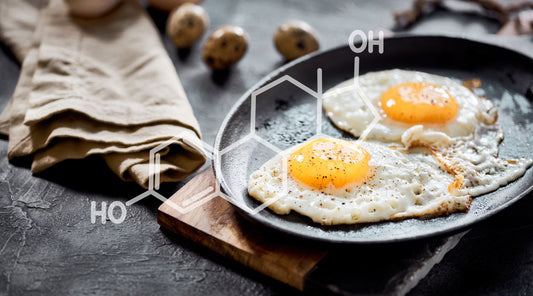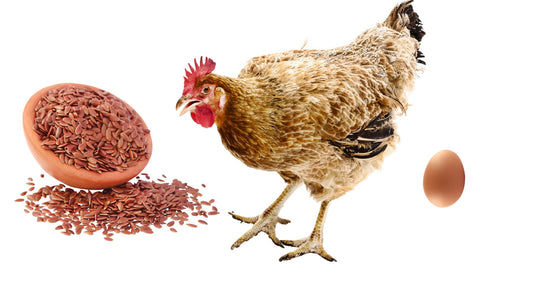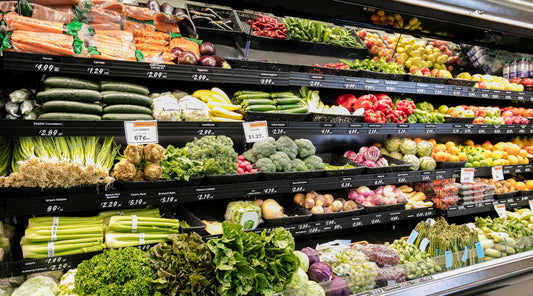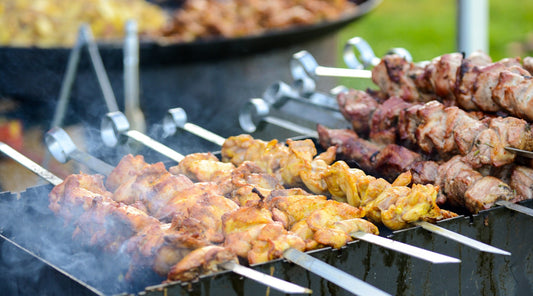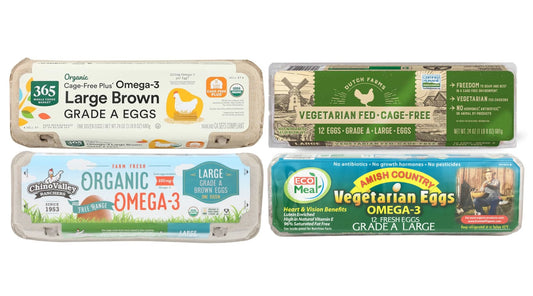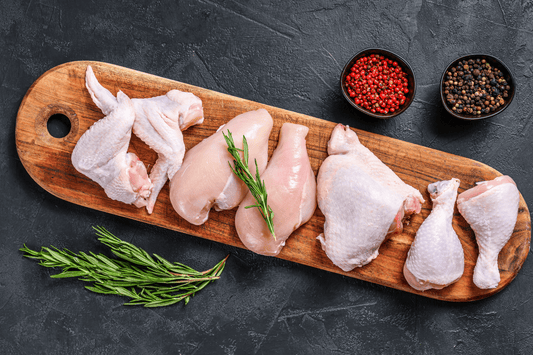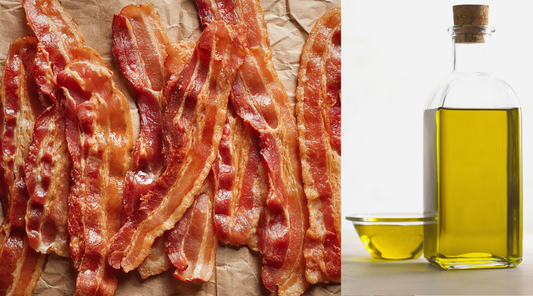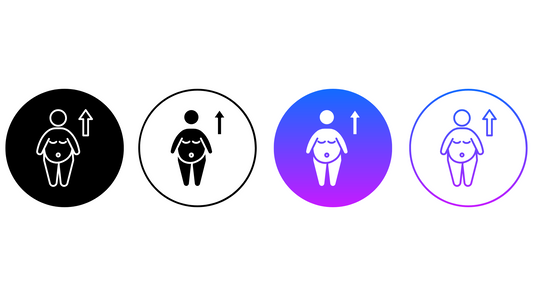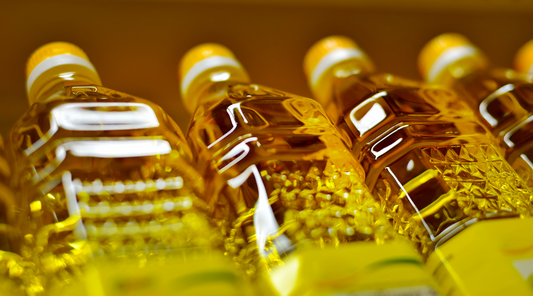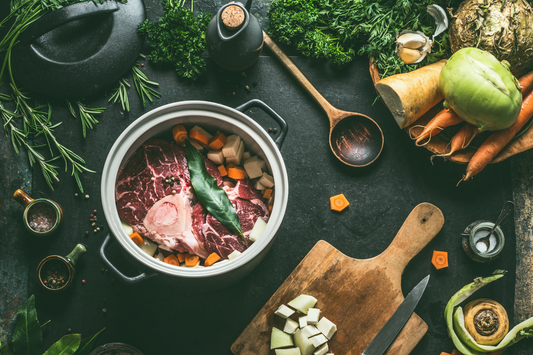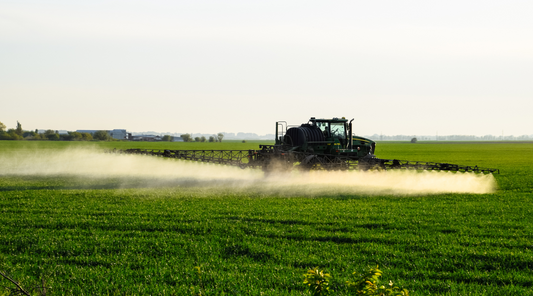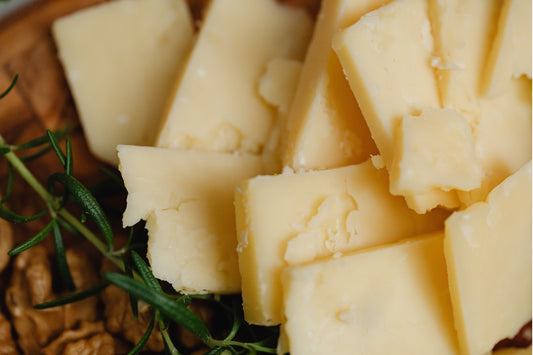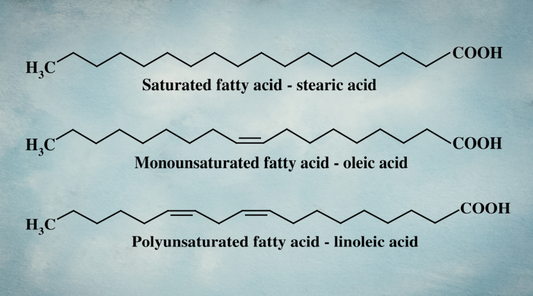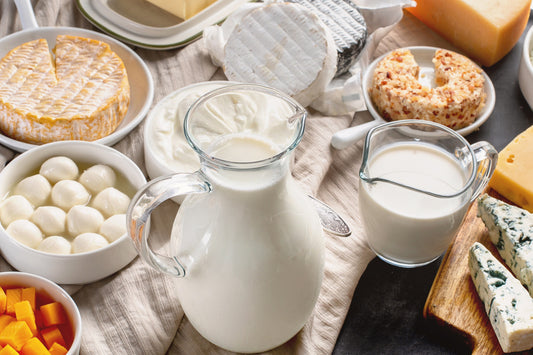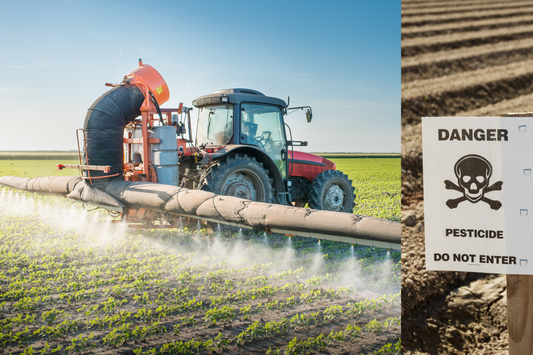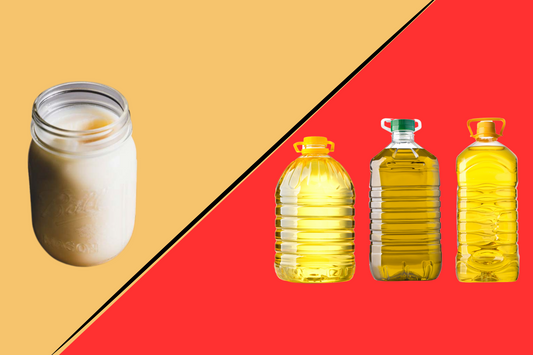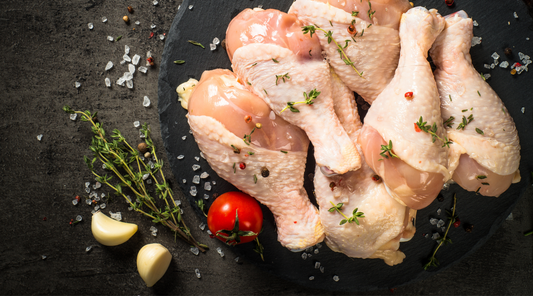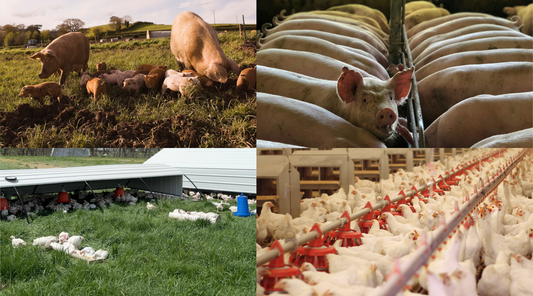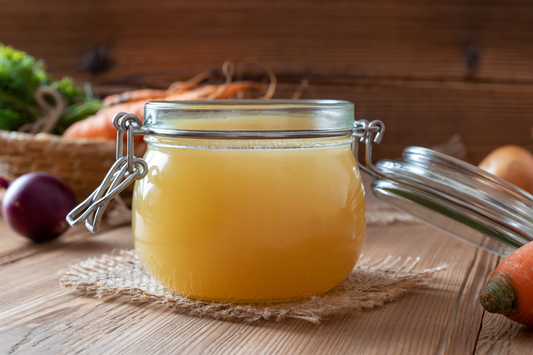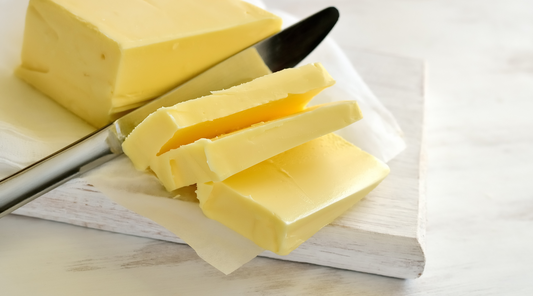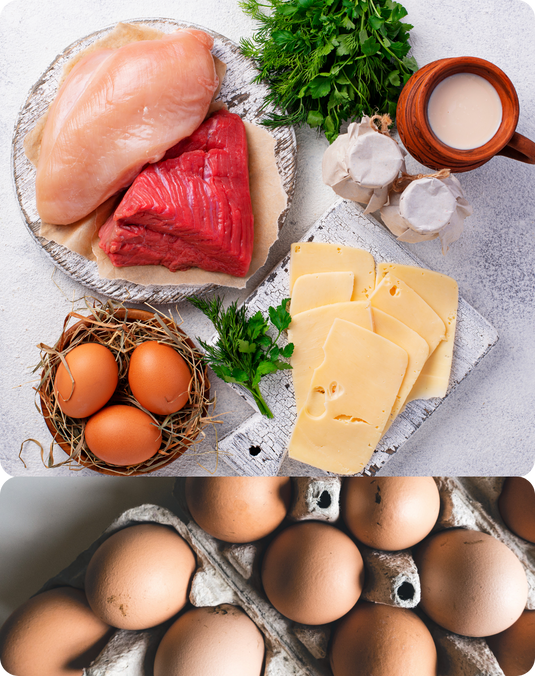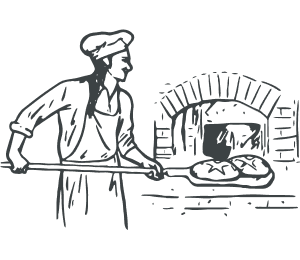
Seed Oils vs. Tallow: Which Fat Fuels a Healthy Metabolism?
This is the information the food industry and Big Ag do not want you to know.
The types of dietary fats we consume and cook with are critical for our metabolic health. Over the last century, Western diets have dramatically shifted... moving away from traditional saturated fats like butter, tallow, and lard, toward polyunsaturated fatty acids (PUFAs) found predominantly in vegetable oils (aka seed oils). This change was initially driven by concerns about saturated fat and heart disease, but recent research increasingly questions that narrative, and this shift contradicts what sustained generations before us.
We now eat diets significantly higher in unsaturated fats relative to saturated fats, largely due to an increased exposure to vegetable oils.
The term “vegetable oil” is a generic label that often includes soybean, corn, safflower, sunflower, and cottonseed oils, all of which are high in PUFAs and poorly suited for cooking. Despite this, these industrial oils are the backbone of modern food manufacturing and are commonly used in restaurants.
To make matters worse, these oils are typically extracted through high-heat industrial processes involving solvents and other chemicals. Many are sourced from genetically modified (GMO) crops and undergo heavy refinement before reaching your plate.
Why Fat Selection Matters:
But fat isn’t just fuel; it’s a vital signaling molecule and structural component that directly influences our metabolism and gene expression. Saturated and unsaturated fats have fundamentally different molecular structures, which means they affect our bodies very differently.
Research suggests that diets high in unsaturated fats relative to saturated fats may trigger a hibernation-like metabolic state, slowing down metabolism, increasing reductive stress, and promoting fat gain. A key marker here is the saturated fat to unsaturated fat (SFA/UFA) ratio:
· Butter, consumed for millennia, has an SFA/UFA ratio > 1 — metabolically favorable.
· Margarine, rich in PUFAs, has a ratio < 1 — less optimal metabolically.
This nuanced understanding challenges simplistic modern dietary advice that labels animal fats as “bad” and vegetable oils as “good.” Choosing fats thoughtfully, respecting both their chemistry and traditional use, is essential.
Fatty Acid Composition between Tallow and Vegetable Oils
Tallow is a traditional fat, used for centuries by cultures worldwide. Vegetable oils, on the other hand, are a 20th-century industrial invention, made possible only through government subsidies, chemical extraction, and industrial agriculture. Crops like cottonseed, soybean, sunflower, and canola are produced cheaply at massive scale thanks to these innovations.
But this mass production has flooded our food supply with levels of polyunsaturated fats that the human body has never encountered before in such concentration.
And we can SEE the impact with obesity and weight gain on the rise.
This fat swap is not serving our health.
While canola oil contains monounsaturated fats (MUFAs) that are often considered healthy, excessive intake of MUFAs combined with PUFAs can downregulate metabolism, activating pathways (like PPAR-alpha) that promote a “hibernation mode” in the body. [i] Remember, balance matters — a higher ratio of saturated fats to unsaturated fats is preferable for metabolic health.
Tallow Used in Traditional Cuisines:
Our ancestors prized tallow for its rich flavor, high smoke point, and stability, making it ideal for cooking before refrigeration or industrial oils existed.
Traditional uses of tallow across cultures throughout the world:
· British/Irish/Scottish: Meat pies, suet puddings, fried fish & chips, Yorkshire puddings.
· French: Potatoes fried in beef fat, confit-style dishes.
· German: Grieben or Schmalz (rendered fat spreads).
· American: Early colonial frying, frontier skillet cooking with tallow.
Butter, similarly, is rich in saturated fat and has been a staple in traditional diets worldwide.
But what about Cholesterol? Debunking Myths:
The idea that PUFAs lower cholesterol and saturated fats raise it (leading to heart disease) conveniently supports industries selling seed oils, processed foods, and statins.
Yet, generations thrived on diets rich in saturated fats from whole foods — meat, dairy, tallow, butter, eggs, and lard. Dietary cholesterol is not the villain it was made out to be. It’s essential for cellular membranes, hormone production, brain function, nerve protection, and vitamin absorption.
And it turns out your dietary cholesterol consumption isn’t the main driver of serum cholesterol.
In fact, in 2015, the US Dietary Guidelines removed cholesterol from the “nutrients of concern” list due to lack of evidence linking dietary cholesterol to blood cholesterol.
High serum cholesterol is often linked to thyroid issues (and endogenous cholesterol production) rather than dietary consumption. In a hypothyroid state, the conversion of cholesterol to other substances is slowed, allowing it to build up in the blood. Our body needs thyroid hormone and fat soluble vitamins for this conversion.
Too high of cholesterol is a sign that something is off, and should be addressed – but the data doesn’t support the common belief of ‘the lower the better’.
Seed Oils Use Up Oxygen and Hinder Your Metabolism
To stay healthy and maintain a healthy body weight, you need a strong metabolism. Meaning, you efficiently burn the food you eat and produce sufficient energy. This process depends on having enough oxygen available at the cellular level.
PUFAs interfere with this by reducing oxygen availability. Your body ends up using valuable oxygen to process and manage these unstable fats instead of producing energy efficiently. As a result, your body shifts away from oxidative phosphorylation (the ideal, oxygen-based energy pathway) toward glycolysis (a less efficient, back-up fermentation pathway).

You want to burn your food! PUFAs don't allow you to do that well.
If you want a robust metabolism, it’s best to limit PUFAs.
Seed Oils Promote Fat Storage and Flip Your Metabolism into ‘Hibernation’ Mode
In the wild, animals don’t just eat more before winter — they change what they eat.
Take squirrels: in the fall, they gorge on nuts, which are rich in unsaturated fats. This shift in diet helps trigger a biological response — their metabolism slows down, fat-storing enzymes ramp up, and they begin piling on fat for the cold months ahead.
This is a designed survival mechanism.
Now imagine if you were unknowingly doing the same thing year-round.
That’s exactly what’s happening with the modern diet, which is loaded with PUFA-rich vegetable oils.
High vegetable oil diets signal ‘winter is coming’ – so you store more fat.
Every major nutrient you consume — carbs, fats, protein, even alcohol — breaks down into acetyl-CoA, a central molecule in metabolism.
From there, your body has a choice: use it for energy, or convert it into fat through a process called de novo lipogenesis (DNL), driven by the enzyme fatty acid synthase.
Seed oils promote more DNL [ii] — more fat being created and stored.
And this is not a good thing. More DNL = higher BMI, higher body fat %, larger waste circumference, more visceral fat, higher triglycerides, more insulin resistance, higher fasting insulin.[iii]
PUFAs act like metabolic messengers. They tell your body:
“Winter is coming. Conserve energy. Store fat. Slow down.”
So your metabolism listens.
It changes gene expression. Downregulates thyroid function. Ramps up fat-storing enzymes. Reduces calorie burn at rest.
In a modern environment of food abundance, this ancient survival program becomes a trap.
➡️ We keep eating.
➡️ Our metabolism stays suppressed.
➡️ Fat gain becomes effortless.
Break the cycle. If you want to restore your metabolism and escape this hibernation loop, ditch the vegetable oils.Prioritize saturated, stable fats — like tallow, ghee, butter, or coconut oil — and give your metabolism the signals it needs to thrive, not just survive.
Oxidative Stability
Different fats behave uniquely under high heat, largely due to their fatty acid structure. Unsaturated fats, which dominate most vegetable oils, are particularly unstable when exposed to heat. While seed oils are often promoted for their “high smoke points”—the temperature at which a fat begins to burn—this can be a misleading metric for evaluating cooking oil safety.
A high smoke point only tells you how hot a fat can get before it starts smoking—not how well it resists oxidation, which is a far more critical factor in high-heat cooking. Oxidative stability refers to how likely a fat is to degrade and form harmful compounds under heat.
Both tallow and seed oils (aka vegetable oil) may boast high smoke points, but they differ dramatically in oxidative stability. Tallow, rich in saturated fats, remains stable and resists breakdown. Seed oils, on the other hand, are high inpolyunsaturated fats (PUFAs), which oxidize rapidly and generate toxic byproducts when heated.
In nature, PUFAs are protected by antioxidants—like vitamin E—in whole foods such as nuts and seeds. But during industrial oil extraction, high heat is used, and many of these natural antioxidants are depleted. When we cook with these oils, more antioxidants are consumed. Then, once inside our bodies (at around 98°F), the oils face even more heat—with few antioxidants left to protect them from further oxidation.
So, the most important factors in determining a cooking fat’s safety are its oxidative stability and PUFA content. As the level of unsaturation increases, so does the susceptibility to oxidation—leading to compounds that can contribute to cellular damage and inflammation throughout the body.
PUFAs contain two or more double bonds, which makes them prone to oxidizing under heat.[iv][v][vi][vii][viii] This lipid peroxidation process is a chain reaction that produces multiple breakdown molecules called Lipid Oxidation Products (LOPs)[ix], which both react with other lipids and amplify the damage effect of lipid peroxidation.
One of the most well studied aldehydes is 4-HNE, derived from the breakdown of PUFAS such as linoleic acid, during oxidative stress. Elevated 4-HNE levels is toxic and can cause cell damage, inflammation, and apoptosis (programmed cell death).
4-HNE readily reacts with proteins, DNA, and phospholipids, leading to cellular dysfunction and contributing to various diseases.
And this is actually very well documented in the literature. Elevated levels of 4-HNE and other toxic LOPs are associated with:
- Neurodegenerative diseases (e.g., Alzheimer’s and Parkinson’s diseases)
- Cardiovascular diseases
- Cancer
- Chronic inflammatory conditions
Here are some important quotes from the literature[x] --
“Human ingestion of cytotoxic and genotoxic aldehydes potentially induces deleterious health effects, and high concentrations of these secondary lipid oxidation products (LOPs) are generated in polyunsaturated fatty acid (PUFA)-rich culinary oils during high temperature frying practices.”
“[T]he order and extent of toxic LOP (lipid oxidation products) production in culinary oils is PUFAs > MUFAs >>> saturated fatty acids (SFAs), and the relative oxidative susceptibilities of 18-carbon chain length fatty acids (FAs) containing 0, 1, 2 and 3 carbon-carbon double bonds (i.e. >C=C< functions) are 1:100:1,200:2,500, respectively”
“Previous NMR-based investigations focused on the peroxidative degradation of culinary oil UFAs during standard frying practices…have demonstrated the thermally promoted generation of very high levels of highly toxic aldehydes and their hydroperoxide precursors in such products (particularly those rich in PUFAs), and these results have been available to the scientific, food and public health research communities since 1994”
For high-heat cooking, tallow (from beef or lamb) and ghee are superior options. These fats have high smoke points and are rich in stable saturated fats, making them more suitable for intense cooking methods.
Then for more medium heat cooking (like sauteing, pan frying, or baking) butter and coconut oil are great choices. These have lower smoke points relative to tallow or ghee, but are rich in stable saturated fats. Now of course ghee and tallow can be used for these applications as well.
Critical Considerations for Cooking Oils:
- Smoke point is not a reliable measure of oil safety. Instead, Oxidative stability and Polyunsaturated Fatty Acid (PUFA) content are the best predictors of oil safety at high temps[xi]
- Higher PUFA content correlates with faster oxidation.[xii][xiii] The more unsaturated a fat, the more unstable it becomes under heat.
- Oxidation produces toxic byproducts that can damage cells, promote inflammation, and contribute to chronic disease.
- When it comes to cooking, you should prioritize a cooking oil that is stable & produces the lowest number of harmful compounds when heated.
- Dietary fats that are higher in PUFAs are the least stable, and dietary fats that are higher in SFAs are the most stable. The more an oil can resist reacting with oxygen and breaking down, the safer and more stable the oil is to cook with.
When selecting a cooking fat, prioritize stability over marketing claims. Choose fats that can maintain their chemical structure under heat—your body will thank you.
Fried foods: one of the main reasons why seed oils are bad for us
An alarming example of why fat choices matter for cooking fats is research studies documenting the toxic Lipid Oxidation Products (LOPs) in fried foods at restaurants. Typical fast-food restaurants serve 100+ orders of fried food in a matter of a few hours, and replace their fryer oil over the course of days or weeks, not hours.
In a questionnaire at restaurants, frequency of fryer oil change varied from weekly to monthly.[xiv] At many restaurants, the same vegetable oil is reused hundreds of times for frying before being replaced! That is very bad news.
Each cycle of heating degrades the oil further, increasing the accumulation of harmful LOPs.
These harmful LOPs are then directly transferred to fried foods, meaning consumers ingest these toxic substances with each bite.
“The level of HNE in the oil extracted from the potato was found to be similar to the level of HNE in the frying oil…These results indicate that toxic HNE was readily incorporated into food fried in thermally oxidized oil; extensive consumption of such fried foods could be a health concern.”[xv]
Studies document that the levels of toxic oxidation products in fried foods are similar to those in the frying oil itself - a serious health concern given the toxicity of these compounds.
“In this study, it has been demonstrated that HNE, a toxic aldehyde which is produced during the heat treatment of frying oils, was incorporated into commercially available FF purchased from 6 fast food restaurants in the Twin Cities, MN. It is believed that frequently consumed fried foods containing considerable amounts of HNE, which is readily absorbed from the diet and incorporated into tissues, may be a public health concern since HNE toxicity has been related to a number of common pathological conditions in the literature.”[xvi]
When oils are repeatedly reused for frying, their trans fat content can increase significantly. This happens as the oil is exposed to repeated cycles of high heat, cooling, and oxygen, triggering chemical reactions that form trans fats, free radicals, and toxic aldehydes—all harmful to human health.
And to add fuel to the fire, these toxic lipid oxidation products (LOPs) don’t just cause cellular damage—they also act as metabolic signals. Combined with the already high levels of unsaturated fats, they reinforce a negative feedback loop that mimics a hibernation-like state, contributing to metabolic slowdown, fat storage, and reduced energy availability.
While long-term human studies are lacking—likely due to industry influence—the well-documented toxicity of lipid oxidation products (LOPs) points to serious health risks from the chronic consumption of fried foods cooked in seed oils. The absence of comprehensive research is no accident; removing PUFA-rich vegetable oils—marketed as “heart healthy”and praised for “lowering cholesterol”—would threaten both the industrial agriculture system and the pharmaceutical industry that profits from treating the fallout.
Vegetable oils and processed foods, both high in PUFAs, are primary dietary sources of 4-HNE and other LOPs, compounds linked to cellular damage, inflammation, and chronic disease. The lack of definitive long-term studies should not be mistaken for safety—it underscores the need for informed caution.
“The potential contributions of toxic aldehydic LOPs to the pathogenesis and incidences of NCDs are supported by a plethora of evidence available, and a full outline of this is provided in Moumtaz et al. (47). One example is strong causal associations between the risk of coronary heart disease (CHD) and the recurrent consumption of fried food meals, specifically ≥4 times per week (157). Moreover, linkages between deep-fried food consumption and prostate cancer risk have been demonstrated (3), and a meta-analysis of published data found that an increased fried food intake engendered an estimated 35% enhanced risk of this condition (158).”[xvii]
You may be wondering—isn’t it okay to use PUFA-rich vegetable oils at lower cooking temperatures, as long as I stay below the smoke point? Unfortunately, the answer is still no.
As discussed above and in several other articles, a diet high in unsaturated fats—even if they aren’t already oxidized—can down regulate your metabolic rate. These fats interact with mitochondrial function and hormone signaling in ways that contribute to a sluggish, energy-conserving metabolic state.
Beyond that, lipid oxidation can begin even at room temperature, especially in the presence of light, oxygen, or trace metals. While the process is slower than with high heat, secondary oxidation products like 4-HNE still form over time, particularly when oils are exposed to air or heat during storage or cooking.
On top of that, lipid oxidation can occur at room temperature (but the process is a littler slower relative to high heat) and is initiated by the presence of light, oxygen, and trace metals. Over time, secondary oxidation products like 4-HNE will form, especially if fats are exposed to air or heat. At moderate heat (104-212 deg F, common cooking temps), lipid peroxidation rates increase significantly. PUFAs will degrade and reactive LOPs will be formed. Above 300 deg F, which again is common for cooking, frying or roasting, PUFA rich oils generate substantial amounts of 4-HNE and other toxic LOPs.
At moderate temperatures (104–212°F), which are common for simmering and sautéing, oxidation accelerates significantly. PUFAs begin to degrade, producing reactive lipid oxidation products (LOPs). Once temperatures exceed 300°F—a range easily reached during frying, roasting, or baking—PUFA-rich oils generate substantial amounts of 4-HNE and other toxic compounds.
Even consuming vegetable oils in their raw, room-temperature form isn’t safe. These oils are highly refined, and once ingested, they enter a digestive environment that’s rich in oxygen, warm (98.6°F+), acidic, and full of pro-oxidant factorslike iron and enzymes. These conditions further drive lipid peroxidation[xviii][xix], meaning harmful compounds can form inside your body—even if the oil seemed stable on the shelf.
Practical Takeaway:
Avoid fried foods when eating out—they’re almost always cooked in reused, PUFA-rich seed oils. At home, prioritize stable, saturated fats for cooking, such as butter, ghee, coconut oil, or tallow. These fats resist oxidation and support metabolic health far better than any vegetable oil ever could.
Carb Intolerance
And the type of fat filling your tank impacts more than just energy— it affects how well your body can burn carbohydrates, too.
Have you noticed how many people today say they just don’t tolerate carbs well?
But maybe it’s not the carbs themselves that are the problem.
Maybe it’s the metabolic environment we’re eating them in.
Because in a healthy metabolism with metabolic flexibility — your body knows exactly what to do after a mixed meal: Burn the carbs first. Then shift to burning fat between meals.
That’s by design. It’s how we’re built.
Brad Marshall has resurfaced a beautiful phrase from the old-school medical literature that captures this concept: “Fats burn in the flame of carbohydrates.”
In other words, proper carbohydrate metabolism through oxidative phosphorylation actually helps your body burn fat more effectively.
But that entire system starts to break down in a metabolism overloaded with polyunsaturated fats, or PUFAs.
Unlike saturated fats — which politely get out of the way and allow carbs to burn first — PUFAs hijack the process.[xx]
PUFAs burn fast and burn first. They get in the way.
They enter the mitochondria ahead of glucose, blocking the normal carb-burning sequence.
They inhibit key enzymes required for glucose oxidation, like pyruvate dehydrogenase.[xxi][xxii]
The result?
Instead of burning carbs for energy, your body starts storing more of them as fat. Blood sugar stays elevated longer. Insulin has to work harder.
Over time, this leads to insulin resistance and metabolic inflexibility — where your body struggles to switch between burning carbs and fat at all.
And the irony?
Dietary fats that are more saturated — the ones we’ve been told to fear — support metabolic flexibility.
They don’t compete with glucose. They help your body burn it more efficiently, stabilizing energy and restoring the natural flow of fuel.
Fat Consumption Summary: Health-Conscious Choices
Dietary fat selection critically impacts metabolic health, how your body burns or stores fuel, and determines your exposure to toxic LOPs.
Key takeaways -
Risks of Modern Diets:
- Shift from traditional saturated fats to PUFA-rich vegetable oils
- Unsaturated fats can trigger metabolic slowdown and increased fat storage
- High heat cooking of unstable oils produces toxic lipid oxidation products
Recommended Cooking Fats:
- High heat: Tallow, ghee
- Medium heat: Butter, coconut oil
- Use sparingly: Olive oil
Practical Advice:
- Avoid restaurant fried foods
- At home, prioritize butter, coconut oil, ghee, and tallow
- Choose fats with higher saturated to unsaturated fat ratios to support better metabolic health
[i] https://articles.mercola.com/sites/articles/archive/2024/04/27/fat-metabolism.aspx
[ii] https://pubmed.ncbi.nlm.nih.gov/1677525/
[iv] https://link.springer.com/referenceworkentry/10.1007%2F978-3-319-54528-8_94-1
[v] https://link.springer.com/article/10.1007%2Fs13197-010-0145-7
[vii] https://link.springer.com/referenceworkentry/10.1007%2F978-3-319-54528-8_94-1
[viii] https://pubmed.ncbi.nlm.nih.gov/20678538/
[ix] https://www.ncbi.nlm.nih.gov/pmc/articles/PMC3118035/
[x] https://pmc.ncbi.nlm.nih.gov/articles/PMC6412032/
[xi] https://melhorsaude.org/wp-content/uploads/2020/05/ASNH-02-0083.pdf
[xiii] https://link.springer.com/content/pdf/10.1007/BF02636103.pdf
[xv] https://www.frontiersin.org/journals/nutrition/articles/10.3389/fnut.2021.620952/full
[xvii] https://www.frontiersin.org/journals/nutrition/articles/10.3389/fnut.2021.711640/full
[xviii] https://www.frontiersin.org/journals/nutrition/articles/10.3389/fnut.2022.901006/full
[xix] https://pmc.ncbi.nlm.nih.gov/articles/PMC3713019/
[xx] https://www.nature.com/articles/0801993
[xxi] https://pubmed.ncbi.nlm.nih.gov/16814104/
[xxii] https://pmc.ncbi.nlm.nih.gov/articles/PMC1224299/


